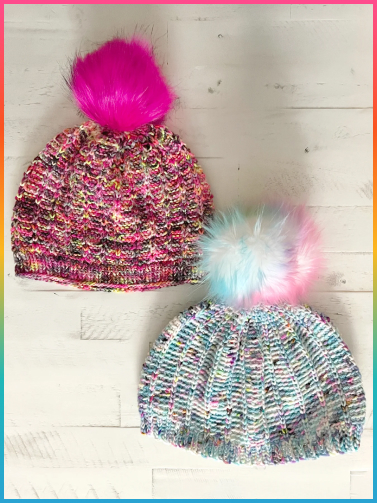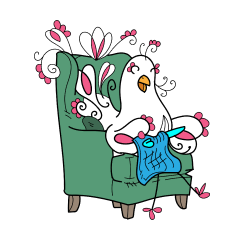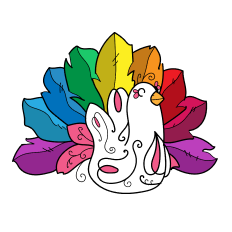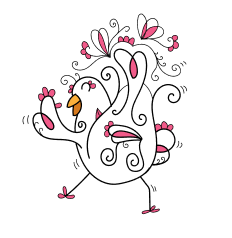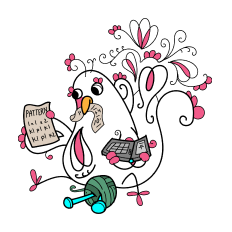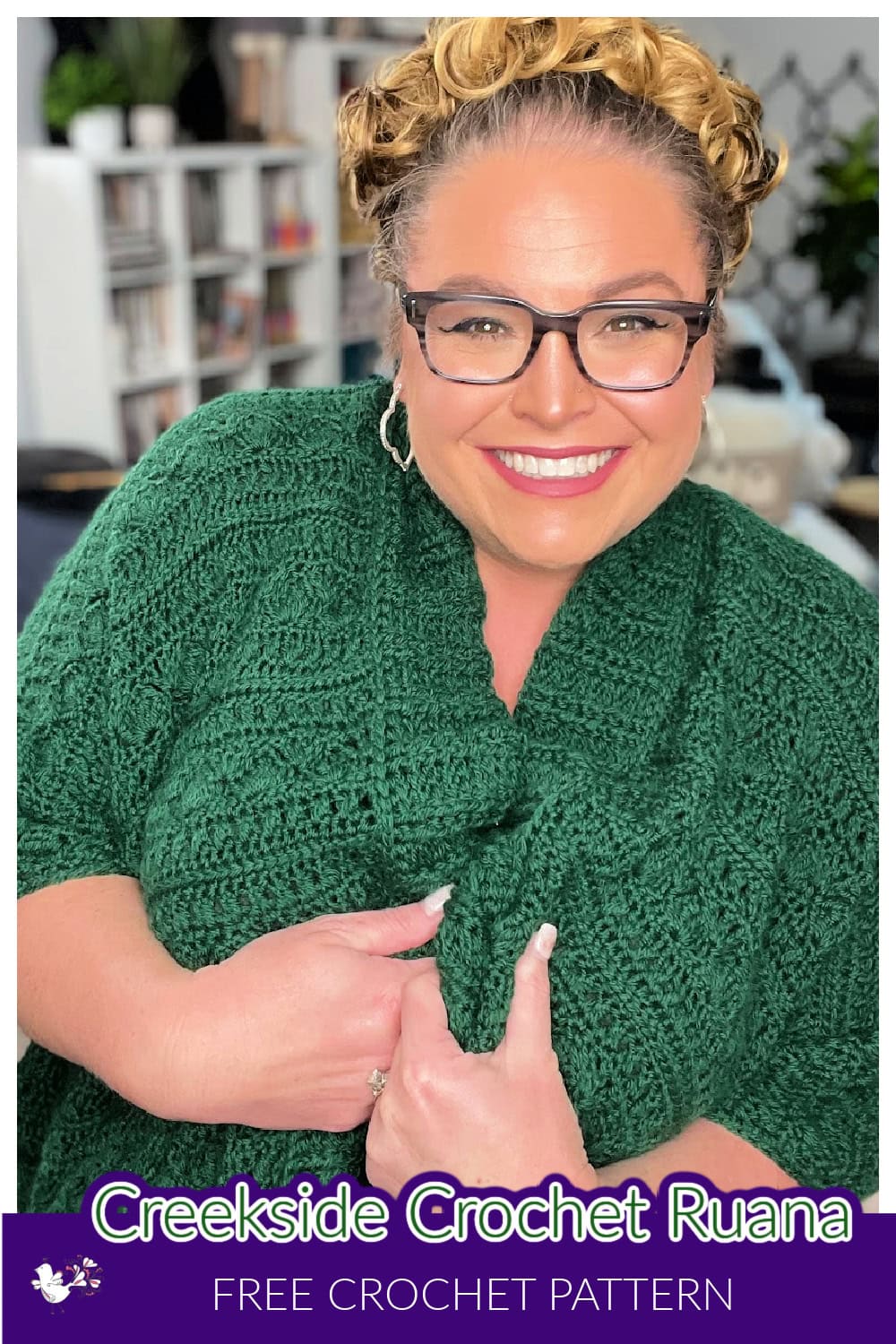Generations of Crochet and How it Heals Families
Hi all, Kathryn here today with a post for you. As you know, I’m Marly’s blog content director. And you might know that my own personal niche is writing at the intersection of craft and therapy. So I love to explore how knitting and crochet heals individuals and communities in various ways. To that end, I try to pop in here once every month or two with a “craft heals” story for you. I hope this supplements our usual Marly Bird content in way that interests you. Today I’m sharing a story about generations of crochet.
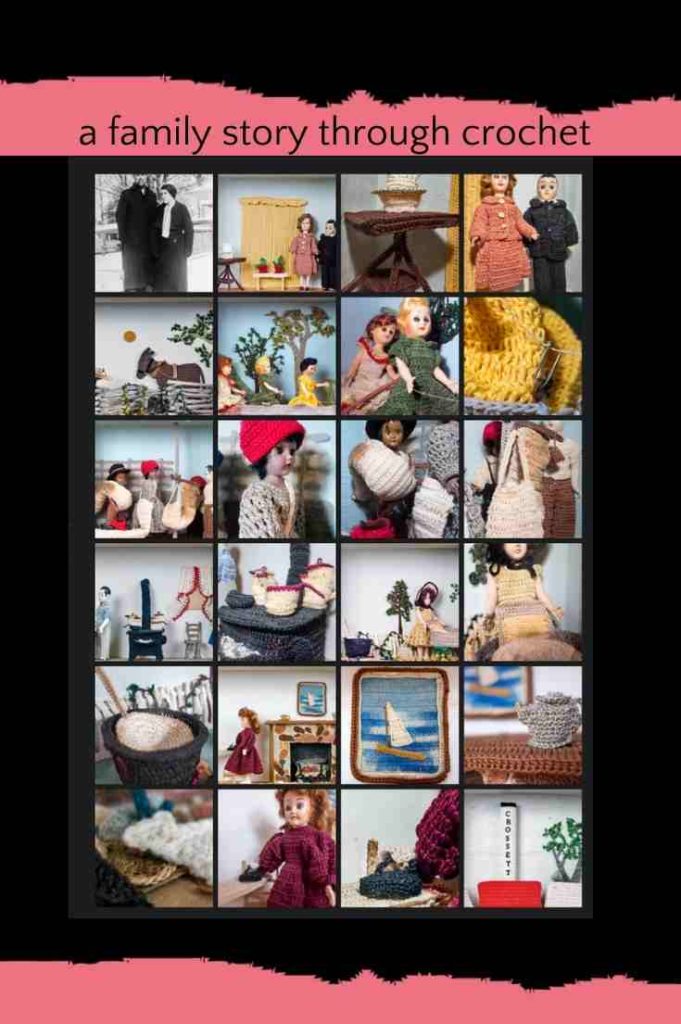
Most Of Us Have Generations of Crochet In Our History
Or it not specifically generations of crochet, we can trace back knitting, sewing, etc, through our generations. (If you didn’t try our Crafty Family Tree project idea, then now would be a great time to try it!) Sometimes it skips a generation. Sometimes we learned crochet from moms or aunts or grandmas. Other times we learned it on our own but thinking back we can recall that grandmothers crocheted. Regardless, crochet / crafting ties us to the generations before us.
It may not even be in our own family line. Yet, we’re connected through that thread that runs through generation after generation since the craft began. We recognize one another and we recognize ourselves in the makers of the past.
So today I wanted to bring you an interview I did that relates to this idea of generations of crochet. It originally appeared in one of my Patreon-only posts. Then I brushed it up and it appeared in the May 2018 issue of my column “Crochet Heals” which you can find each month in Happily Hooked Digital Magazine. I bring it to you in full here today and hope that you enjoy!
Generations of Crochet Heals: Dana Browne and Fannie Mitchen
Fannie Mitchen is a woman who always crocheted, which is true of many women, of course. What she did differently is that she began to consciously crochet her own life story. She made dioramas of crochet telling this story throughout her life. This didn’t go unrecognized; in the early 1980s an Arkansas mayor declared a Fannie Mitchen Day, at which time her work was exhibited in a Threads of Life exhibit at a local museum.
Hours can be spent poring over Fannie’s website, looking at her dioramas and learning her life story. She is quoted as saying, “I have used dye, coffee, wax, spray, and wire as well as thread and imagination to tell the story of our life together.”
Thus, the story begins with her marriage. Some of the 125 photos go on to share details about her life, while the others add visual details where we can really appreciate the crochet work. Through these snippets, we learn not only about her story individually but also what it was like for a woman to live in Arkansas throughout much of the twentieth century including through the Great Depression.
As she says, “I guess reminiscing is a sign of old age, but with eighteen great-grandchildren, that privilege should be mine and there is so much marvel about – from wood stoves to electric ones, “Horse and Buggy” to cars, sleigh rides to water skiing, air planes, telephones, radios, televisions, and so many great medical discoveries.” We are connected to the generations through these stories. And she told them literally through generations of crochet.
Did Crochet Heal Fannie?
Although her images and the associated text don’t speak specifically to healing through crochet, there are hints of it all over the place. She mentions early on that she quit teaching because she got married; you can sense that there’s a little regret in this. Moreover, it seems no coincidence that she started crocheting her life story at this same time. She mentions having babies just before The Great Depression. She took the whole family to California for eight months in the hopes of work. Notably, she never self-pities. Not does she mention anything specifically about crochet as a way to get through this. Nevertheless, anyone who crafts to cope can see how it might have helped. Fannie does mention that “many hours were spent singing or telling stories to the children” so we can see how her domestic creativity likely extended to many areas of her home. And how this might lead us to generations of crochet.
Of World War II, she says, “Except for anxiety for my two brothers and our many friends, and the minor inconvenience of rationing and shortages, our lives did not change much because of the war.”
We don’t know how much she crocheted at this time. Moreover, we don’t know whether she ever knit or crocheted for the troops as many people did. We can only guess.
She shares briefly the devastation of losing a young grandchild in the 1950s, Our hearts go out to her. And we don’t know, but hopem that she stitched her way through that grief.
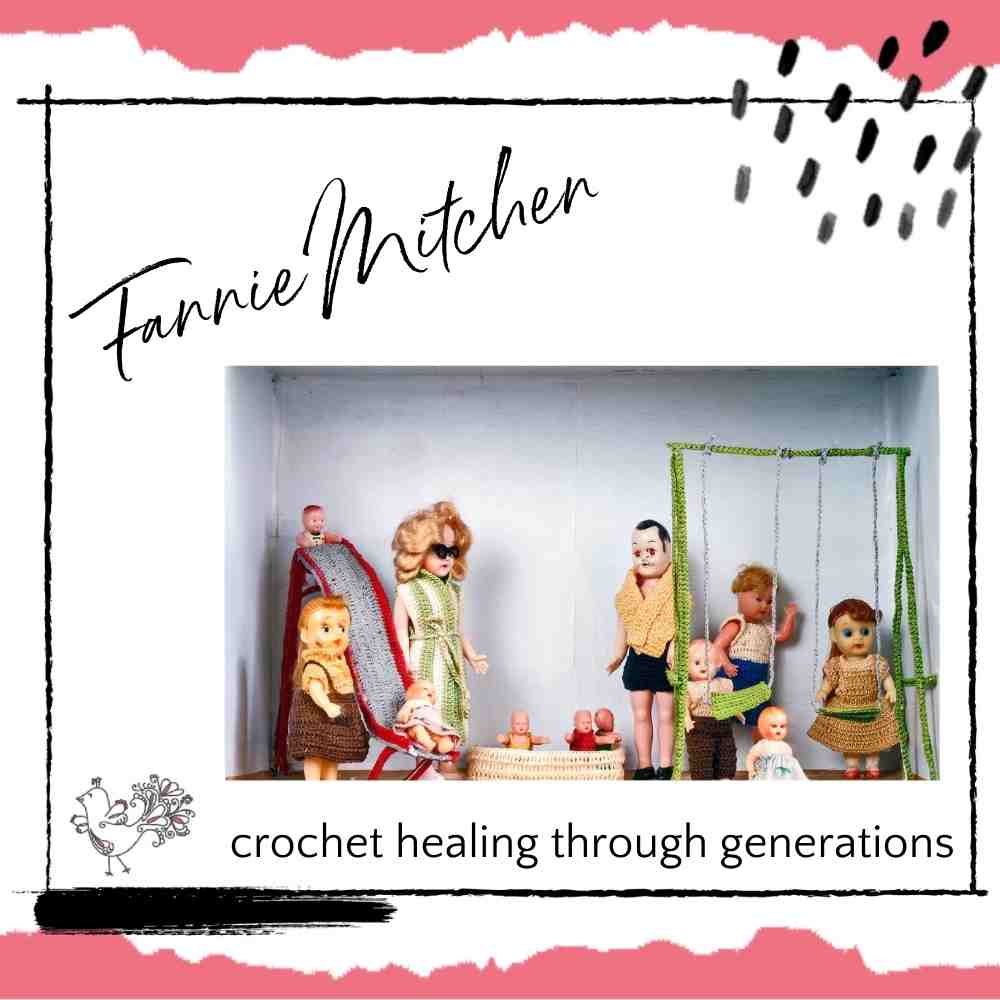
We Know About Fannie In Large Parts Thanks to Family
Fannie’s great-granddaughter Dana Browne was young when Fannie passed. However, they’ve played a strong role in one another’s lives. Dana and her husband collected, photographed and archived as many of the crochet dioramas as they could. (Unfortunately some had been destroyed). Moreover, they put in long effort to get them permanently placed at the Historic Arkansas Museum in Little Rock, Arkansas. Dana generously sat down for an interview about this experience. I’m humbled that she let me share this story about generations of crochet in her family.
Hi Dana. Let’s start with what memories do you have of your great grandmother?
My great-grandmother passed away in 1982 when I was only ten years old. Therefore, I never got to know her as well as I would have liked. However, I do have a few scattered images in my memory. I remember visiting her at their home in Crossett, Arkansas. When she wasn’t in her armchair crocheting (in a room that I always thought was much too dark for sewing), she was in the kitchen, wearing her apron and cooking. One of my favorite things that she cooked was a soft custard. Hers was so rich and creamy iIt wasn’t until recently that I managed to replicate it. I used her recipe and did a lot of research on proper custard making techniques. For example, I learned not to modernize it with lowfat milk.
I also remember that my great-grandmother was a religious woman. They attended the Church of Christ in Crossett, and my great-grandmother had her regular seat in her pew. You knew it was her seat because she had a foot stool that lived there. Maybe I got my height, or lack thereof, from her. Either way, I often think of her when I pull out my portable footstool.
What do you know about her crochet – how she learned, why she enjoyed it?
I have not been able to find any information on how she learned to crochet. However, as she grew up in a rural area, sewing and crocheting was a fairly common endeavor for women. Therefore, I imagine she learned from a necessity more than from the perspective of it being the hobby that led to the story of her life. That was the way that generations of crochet happened back then. She crocheted many gifts of tablecloths, pictures, toilet paper covers, baby booties, quilts, etc. If it could be made by crochet, she made it.
How do you think she might have benefited in her life from this ongoing craft process?
When Rosalyn Spencer, Fannie’s daughter, passed away, I inherited the scrapbooks of newspaper clippings, letters, and cards that had been collected through the years regarding the collection and her crochet.
I read through everything. I scanned and preserved it before passing it to the Arkansas Historic Museum with the doll collection. In doing so, I realized how much she loved sharing the craft with people.
She loved talking to new people that she would meet when her work was displayed at state fairs and sidewalk festivals. She loved sharing the collection with school children. In fact, she would have classes visit her house. She would talk to them about what life was like “in the old days”. In a day when the world was smaller, her works allowed her to know people that she never would have met otherwise. She was able to touch those lives and have hers touched in return.
This is exactly what I mean when I say crafter today are impacted by generations of crochet, whether we realize it our not! How does her work inspire you?
The amount of detail and time that she put into her craft is awe-inspiring. Even when she received criticism, such as from the one woman who complained that her scenes were not to scale, she never let it diminish her spirit or stop her from crocheting and improving her craft. I can only hope to learn from her example. I try to maintain her sweet spirit. And I try to embody her continuing desire to improve even when others are set against me.
Do you do any crafts?
I was probably eight or so years old when she tried to teach me how to crochet. My hands were so small, that I got very frustrated trying to hold the hook and work the stitches. When I gave up, she simply smiled, and said that we would try again in a few years. Sadly, she passed away when I was ten, and I will forever be sad that I never learned how to crochet.
My great-grandmother’s blood does run through my veins though, and shortly after her death, I learned how to cross stitch. For years, I enjoyed counted cross stitching before needing to make a costume and learning some basic sewing techniques. I’ve since made aprons, curtains, pillow cases, etc. although I’ll admit that machine sewing will never be as fun for me as sewing by hand. I also count photography and scrapbooking among the crafting things I enjoy, although having so many varied interests means that I am behind in everything.
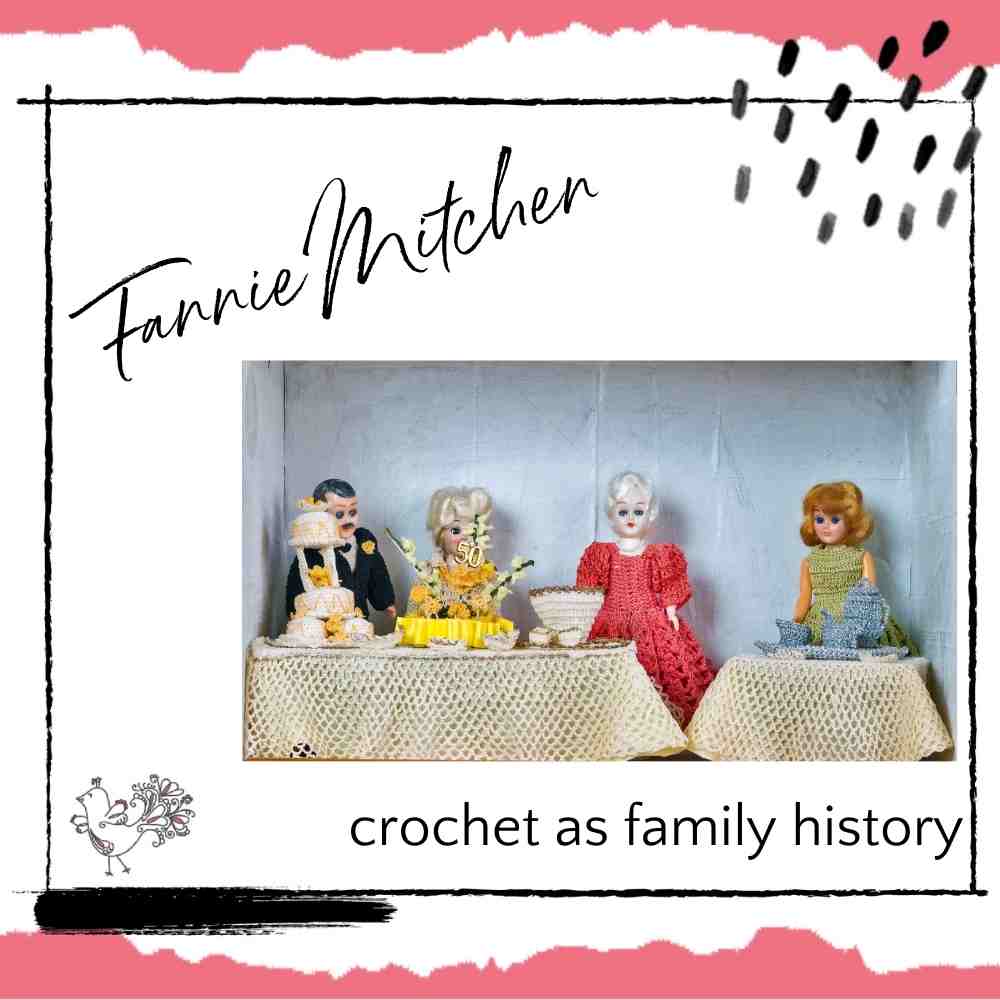
This is a great example of how generations of crochet can turn into other crafts while the center of the meaning of it still holds. Can you tell us about Fannie’s Threads of Life collection of her work?
In March of 1982, the Mayor of Crossett declared it “Fannie Mitchen Day” and they had a reception in the city recreation hall where they displayed the collection. For that, Fannie wrote up descriptions for each diorama for people to see as they walked through. She also took photos, had them printed, and had my aunt type up the story and print it out on an old dot matrix printer. They put together multiple books and gave the books out to members of the family. We used one of those books as a guide to tag the dioramas we considered to be part of the life story. Anything that had not been disassembled or given away was donated as the “Threads of Life” collection to the Historic Arkansas Museum.
What was it like for you and your husband to photograph her dioramas after her death?
Twenty years after my great-grandmother’s death, my husband and I drove from Dallas, TX to Monticello, AR where my Aunt Rosalyn was living. She housed the entire collection on a 9’ x 13’ wall. At the time, we had a tiny 2.1 megapixel digital camera. The boxes were sealed shut, so my aunt used some tool which allowed us to pull the glass off so we could take the photo without glare from the glass. I wish we had paid better attention because we can’t remember now how it was done. We didn’t even have proper lighting equipment, and the photos didn’t turn out all that well. Still, we had a personal website, and I learned enough to put the story up on our domain along with the photos. Long after I quit maintaining that website, we kept those pages viewable in case anyone stumbled across them.
After my aunt passed away in 2015, we knew we had to get better photos as the original ones were rather embarrassing. By then, my husband had a nice DSLR and studio lighting and more knowledge about photography. We also took the opportunity to do some minor repairs and clean the glass which always breathes new life into the collection.
The funny thing about photographing these is that no matter how many times I see them, every time I look again, I see new things. I eventually pulled up my camera and he would take the overall photo and then hand it to me so I could grab some macros of certain aspects. Even then, there is stuff now that I know I missed.
Can you tell us more about the process of archiving her work? How did that process impact your grief process of her death?
I don’t remember my great-grandmother’s death that much. I was only in second grade, and I did not attend her funeral. In 2015, when my Aunt Rosalyn passed away, I started going through the scrapbooks and scanning the newspaper articles. It is funny how even though those books were out with the collection when we visited, I never took the time to actually read the articles and letters. In figuring out how to best scan them, I actually sat and read through them, and I was amazed at how emotional that experience was. One of the letters was from a lady in Dallas. She had seen the collection at the 1968 Texas State Fair, and it moved her so much she wrote a long letter to my great-grandmother detailing her own life in rural America and the memories that my great-grandmother’s collection invoked. I became curious about the writer who had a very unique name, so searched her name on the Internet and managed to find her niece who was very happy to receive a scanned copy of that letter, and I was so happy to have been able to share that with her.
Connecting to others through this story of generations of crochet. I love this! What is your personal favorite piece in her collection and why?
I don’t think I can pick one favorite. I love the girls in their Sunday dresses pulling in the trot lines for Sunday lunch. The outhouse always makes me laugh. I love the 50th Wedding Anniversary with the metallic gold threads used in the tiny silverware. However, I think that my favorite is the same as my mother’s, which is the ironing scene. I love the ironing board set up on the backs of the wicker chairs, and it completely won me over when I was taking my macro photographs and saw the tiny little cloth that the lady is using to hold the iron because of course you wouldn’t hold a hot iron without one! I am always amazed at Fannie’s attention to detail.
What do you most want people to know about Fannie?
My great-grandmother was a simple, kind, Christian woman who loved her family and loved sharing her ability to create beautiful crocheted works of art with the world. If one wants to know what life was like for the average woman living in rural 20th century America, one could not find a better example than Fannie Taylor Mitchen.
Do you have a story about generations of crochet / crafting in your family? Share it with us! We love these stories!
You Might Also Like:
Categories: Crochet, Dibble Dabble Inspiration


